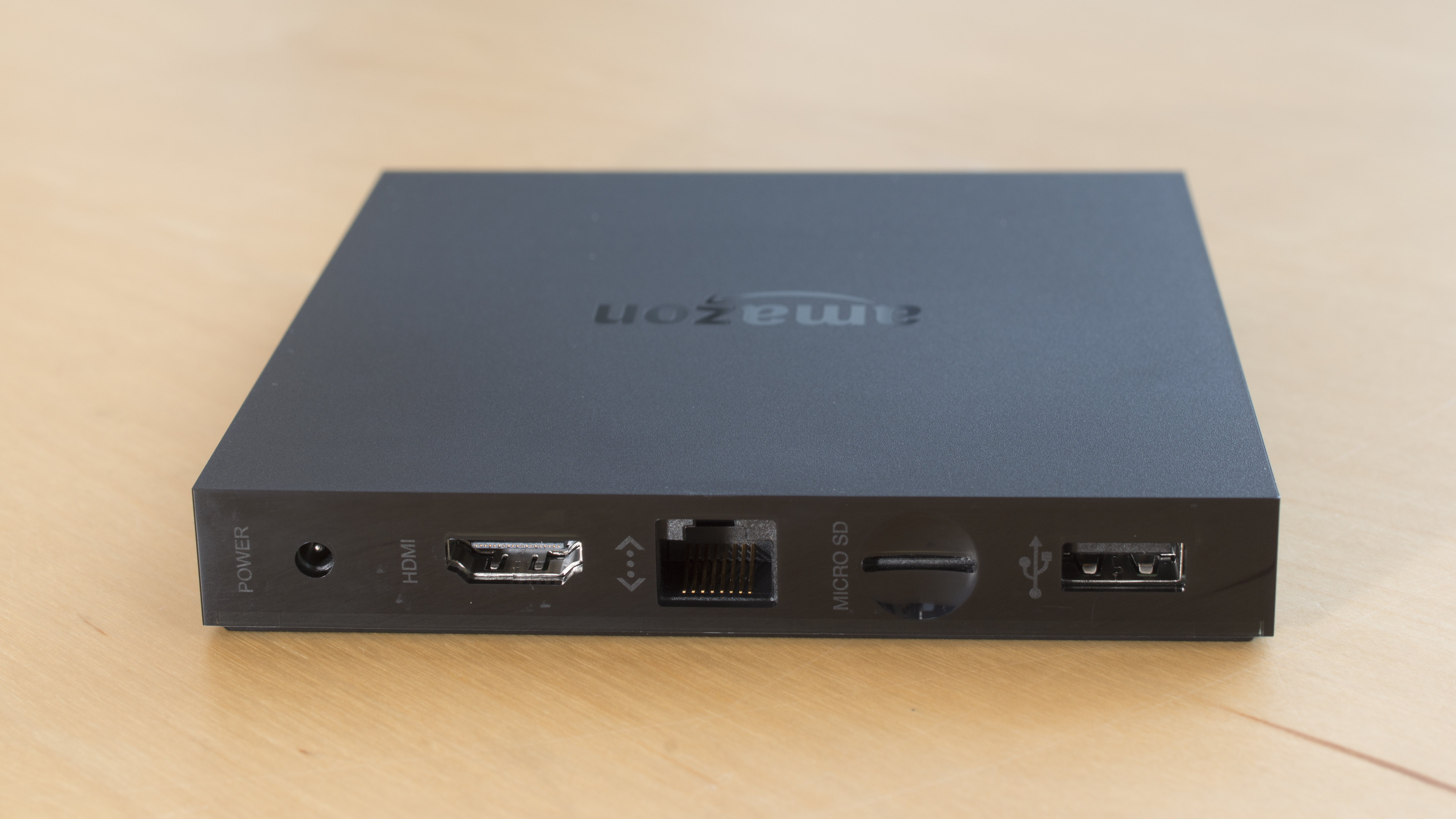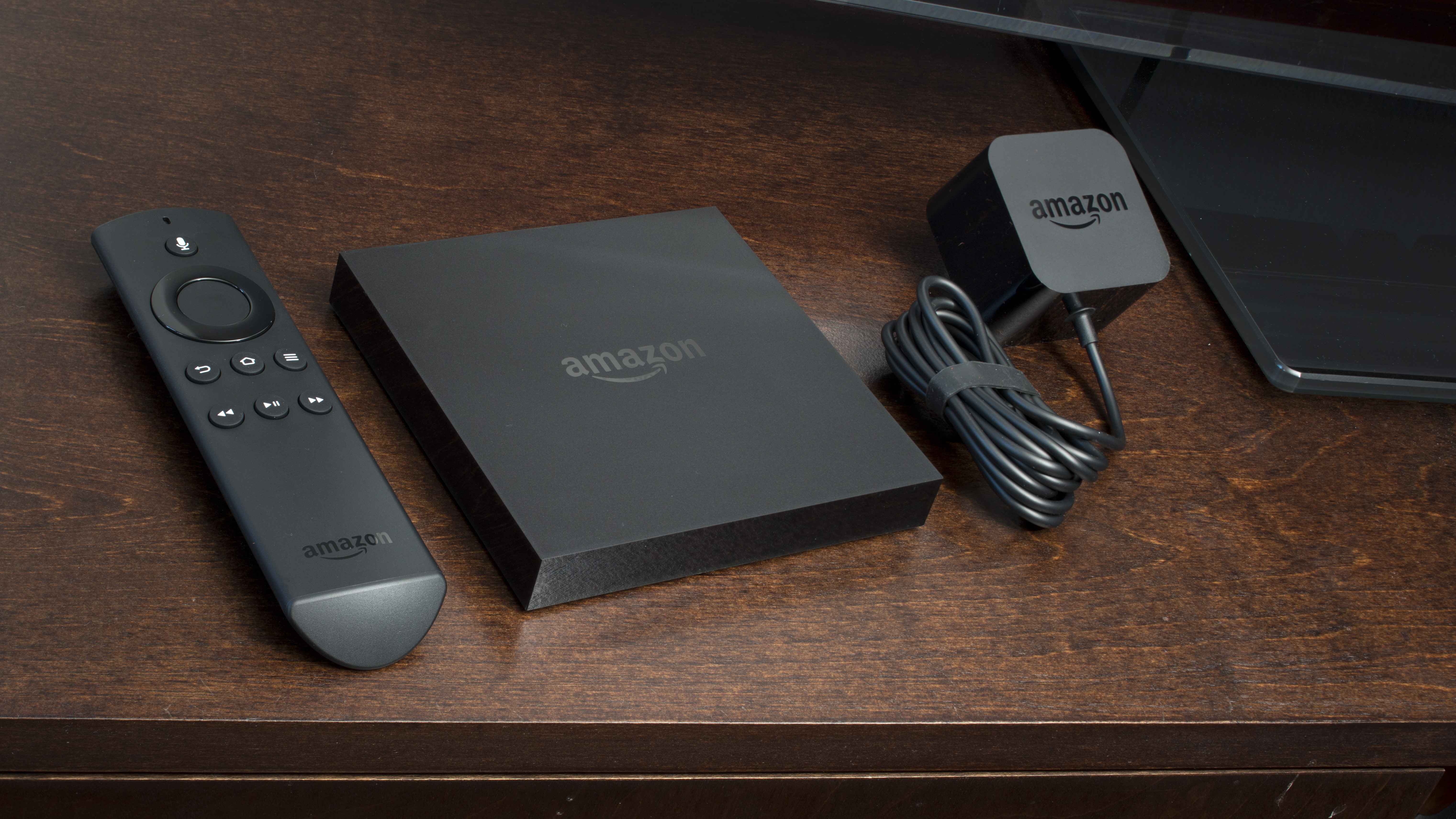TechRadar Verdict
The new Amazon Fire TV is the perfect Ultra HD box for Amazon Prime faithful without the smarts in their 4K TV; however for anyone else it's merely an okay streamer. It's slick and responsive, but the Amazon bias means you won't get the most from the box without Prime.
Pros
- +
4K UHD playback
- +
Responsive
- +
The biggest choice of paid-for 4K content
Cons
- -
Amazon Prime is effectively a must
- -
Some codec limitations
- -
Non-universal search
Why you can trust TechRadar
Amazon's streaming video player, the Amazon Fire TV, is an always-improving, amazing piece of tech that can show you content you want faster than you can say "I'd like an Amazon Prime account, please."
And while the 2015 iteration of the player is getting a bit long in the tooth, it's still worth auditioning as part of your audiovisual arsenal.
Why? Well, the Fire TV sports 4K Ultra HD playback capabilities - i.e. it's capable of playing shows and movies in the highest commercial resolution available today: 3840 × 2160 or 2160p and at a fairly reasonable price, too.
It's not the only media streamer boasting 4K chops these days, with boxes from Google, Apple, Roku, Nvidia and others all claiming the same capabilities, but even still, two years later it remains a competent streaming device that's worth exploring, vetting and, perhaps, ultimately buying if it fits your style.
- Looking for the latest model? Here's our review of the Amazon Fire TV 2017
Hardware
The 2015 iteration of the Amazon Fire TV looks identical to the original Fire TV box released way back in 2014, but that's no bad thing.
The sleek, shiny exterior is understated enough to fit into even the most minimalist of modern living rooms, and with the remote control featuring Wi-Fi connectivity you can happily hide the box behind your TV if you're not into the mini-monolith aesthetic, as there's no need for a direct line of sight.

Inside, however, things have changed considerably, with a nominally quad-core MediaTek processor sitting at the heart of the new Fire TV. It's really a pair of dual-core chips (one running at 2GHz and the other at 1.6GHz) strapped together, but that doesn't stop it from offering around 75% faster performance compared with the old model's silicon.
Sign up for breaking news, reviews, opinion, top tech deals, and more.
There's also a dedicated PowerVR GX6250 GPU inside to give the new Fire TV that gaming edge, and 2GB of system memory to keep things flowing seamlessly.
The Fire TV comes with a decent 8GB of internal capacity, with the option to expand via the microSD slot on the rear of the box, which facilitates up to 128GB of storage.

In terms of networking there's a Gigabit ethernet port for wiring in – probably your best bet for a consistent 4K UHD stream – or the dual-band, dual-antenna 802.11ac Wi-Fi connection.
To nail that Ultra HD playback the MediaTek chipset supports the H.265 (HEVC) codec, as well as the legacy H.264 for 1080p content. It should be noted though that it's only capable of rocking a 4K UHD stream at a maximum of 30 frames per second, while it stretches to 60fps for 720p and 1080p outputs.
To enable UHD playback you'll need a compatible display, and that doesn't just mean the obvious 3840 x 2160 panel resolution – it will also need the same HDMI 2.0 (HDCP 2.2) connection as on the rear of the Fire TV.
Without that you're not going to get the copy-protected 4K awesome of either Amazon Prime or Netflix; you can still watch 4K YouTube though if that's of any interest...

The Fire TV remote hasn't really changed, aside from using Wi-Fi over Bluetooth. It's still rocking the same voice search functionality which made the first Fire TV a bit of a hit, and it's also nicely responsive and feels solid in the hand despite its diminutive size.
Software
The new Amazon Fire TV is running on a forked version of the Android operating system, and we don't mean in the colloquial use of the term; FireOS isn't totally forked, it's actually pretty responsive.
Its development was taken down a different path to the final Android OS, making FireOS a distinct operating system in its own right. That's why you won't be getting the full Play Store range of apps, and one of the reasons Amazon has its own app store ruling the roost.

FireOS is focused almost entirely upon helping you access content quickly and easily, with a very obvious bias towards the Amazon ecosystem.
This corporate bias is understandable – it's similar to the way Android TV's recommendations are only based on Google services and NOW TV is focused on Sky content – but it would make you feel utterly excluded if you weren't an Amazon Prime member.
The voice search software is an integral part of the Amazon setup, and it's quick, responsive and impressively accurate, no matter which bastardised version of a regional accent I tried to confuse it with.
Amazon tried for years to keep you walled within its garden with its voice search function. Asking the Fire TV to show you movies that star Tom Cruise and nine out of 10 links would point to a movie on Amazon Prime Instant or Amazon Instant Video. Thankfully, it's changed its tune in the last few months, adding dozens of new searchable catalogs – like Netflix's – to the search function. For customers in the US there are even more options like Hulu, Sling TV and DISH's new DISH Now service that lets you stream content from your Hopper to your Amazon Fire TV wherever you are in the world.
And although universal search now thumbs through 75 sources to find movie and TV show information, it can still feel like it panders to Amazon's service more often than not. This, in and of itself, isn't a deal breaker, but it does serve as a constant reminder whose hardware you're using.
